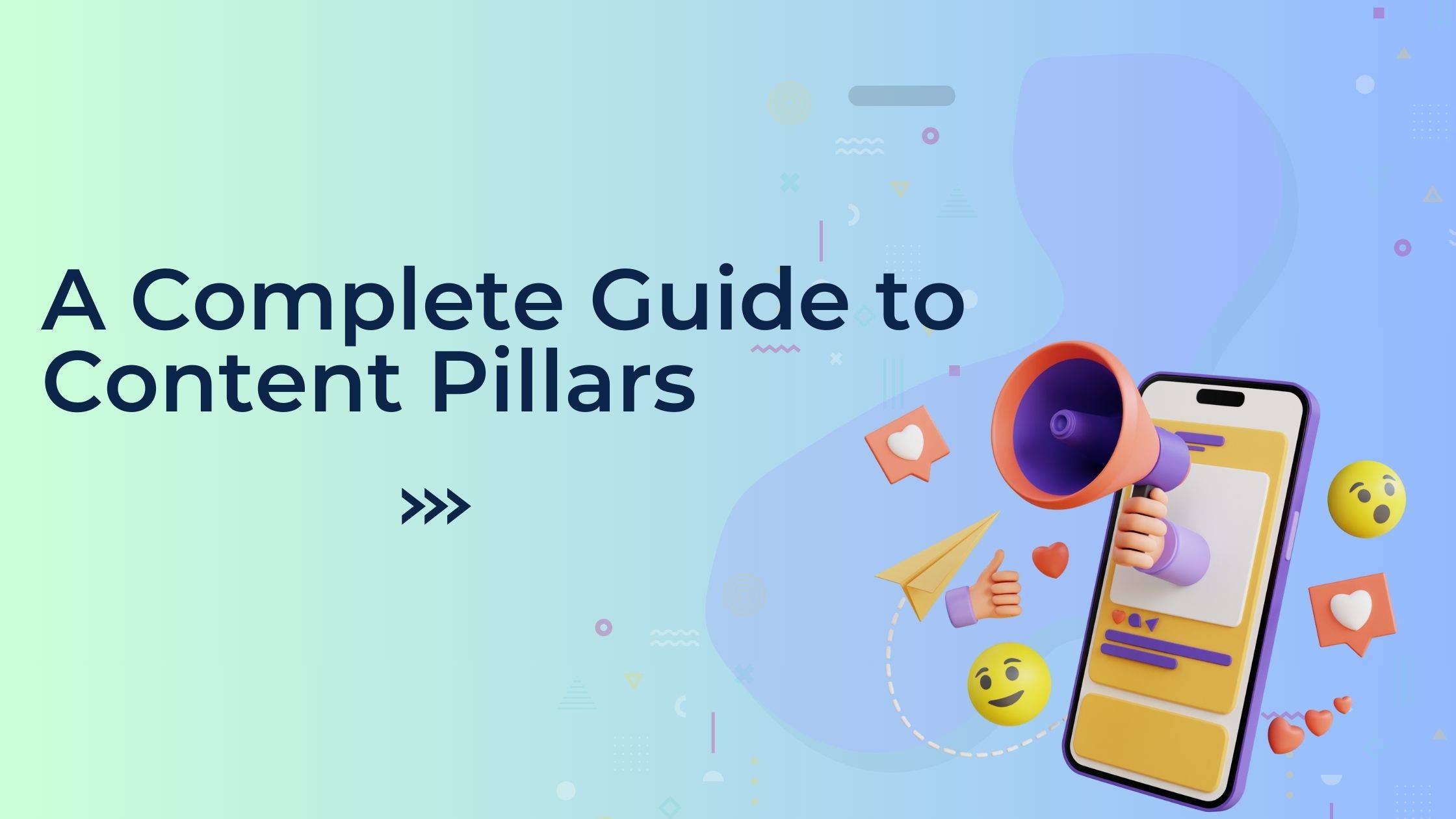Does your content sometimes feel all over the place? Like you’re testing random ideas without a clear plan to tie them together? That’s where the concept of content pillars comes in to bring focus and direction.
We’ve all been there—publishing blogs, social media posts, videos, and more, only to realize the message isn’t cutting through the online clutter. Content pillars solve this problem by providing structure and coherence to your entire content strategy. But what exactly are these “pillars”? How do they strengthen your marketing approach, and how can you integrate them effectively into your workflow?
In this article, we’ll take a closer look at content pillars, explain their value, and show how they can serve as the foundation of your content creation process. Whether you’re a marketer looking to refine your strategy or simply curious about their role, you’re in the right place. Let’s break down content pillars and explore how they can sharpen and stabilize your content efforts.
What Are Content Pillars and Why Do They Matter?
Content pillars form the foundation of your content strategy. They are the broad themes or core topics around which all your content is built. Think of them as the main support beams of a structure—without them, your content would lack stability, direction, and focus.
So, why are content pillars so valuable? They provide a framework that organizes your content into clear categories, making it easier to branch out into related topics and subtopics. This isn’t just an organized approach—it’s a smart strategic move. Content pillars improve user experience by helping audiences navigate your content seamlessly, and they also give search engines a clearer understanding of your site’s structure, which can significantly improve SEO.
In addition, strong content pillars position you as an authority in your field. When your audience sees in-depth coverage of a subject, it builds trust and reinforces your credibility as an expert.
Types of Content Pillars with Examples
Not all content pillars are the same—they serve different purposes depending on your strategy. Here’s a look at some common types:
- Authority Pillar Content: These are in-depth, comprehensive resources designed to cover a topic from every angle. For example, an “Ultimate Guide to SEO” would serve as a central hub, covering beginner basics through advanced techniques. Supporting cluster pages would then explore subtopics like keyword research, link building, or technical SEO.
This approach ensures you create both a broad overview and detailed supporting content, strengthening your authority and reach.
Definition Pillar Content
As the name implies, a Definition Pillar is designed to clearly explain and define a topic in detail. It breaks down every layer of the subject, making it especially effective for beginners who are searching for foundational knowledge. These pillars are often built around “what is” keywords.
For example, a Google search for “What is SEO?” will return numerous definition-style articles. One top-ranking example is from Search Engine Land, which explains how SEO differs from SEM and PPC, why it matters, and how it works in practice.
Most successful “what is” articles follow a proven format: define the concept, explain its importance, and provide guidance on how to apply it. This approach gives readers a clear understanding, opens opportunities for internal linking, and incorporates visual elements—all of which improve search rankings and enhance comprehension.
How-To Pillar Content
The How-To Pillar serves as a practical guide, walking readers through a process step by step. While authority or guide-style content covers a broad topic, this type drills down into actionable details, helping users accomplish a task or solve a specific problem.
For instance, searching “How do I learn SEO?” brings up plenty of structured tutorials. HubSpot’s article is a strong example, presenting a step-by-step method right at the top of the page. This not only reassures readers they’re in the right place but also creates opportunities for featured snippets in search results.
By creating How-To Pillars, you also open the door to spin-off subtopics that can link back to the main pillar. This interconnected structure builds a strong internal linking network—a major advantage for SEO.
How Pillar Pages Strengthen Content Strategy
Pillar pages are central to shaping an effective content strategy. They act as in-depth resources that provide a broad overview of a topic while connecting to cluster content covering subtopics in detail. Think of a pillar page as the hub of a wheel, with the cluster pieces serving as spokes that support and expand the core theme.
Strong pillar pages let you explore a subject thoroughly, improving your audience’s understanding while creating a clear content hierarchy. This makes your site easier to navigate and more engaging for users—something search engines reward with higher visibility.
In addition, pillar pages support extensive internal linking, weaving together related content into a unified structure. This not only boosts user engagement but also strengthens the authority of your main pillar and all connected pages.
How to Build a Content Pillar Strategy
At first glance, creating a content pillar strategy may seem complex. In reality, it’s about aligning your audience’s needs with your brand’s goals and strengths. Here’s a straightforward approach to building a content pillar framework that delivers results:
1. Understand Your Audience
Everything starts with knowing who you’re speaking to. Defining your target audience ensures your pillars resonate and prevents wasted effort on irrelevant content. Use tools like buyer personas to uncover their motivations, questions, and challenges.
2. Identify Core Topics
Once you know your audience, determining your content pillars becomes clearer. Typically, 3 to 5 main pillars are ideal—they provide enough variety while keeping your content focused, helping position your brand as an authority in your space.
3. Conduct Keyword Research
Strong keyword research connects your content to the way your audience searches online. Tools like Ubersuggest or AnswerThePublic can reveal valuable insights and guide your content toward better visibility in search results.
4. Develop Cluster Page Topics
Clusters expand on your core pillars by covering related subtopics in detail. To do this:
- Break down each pillar into focused sections and answer specific questions.
- Research subtopics to find demand, relevance, and content gaps.
- Tailor clusters to audience preferences using analytics.
- Balance depth with clarity to avoid overwhelming readers.
- Mix formats—how-to guides, infographics, or case studies—for variety.
- Optimize with keywords, internal links, and proper structure to strengthen SEO.
5. Audit Existing Content
Review what you already have to see if it can be repurposed or refined to align with your pillar strategy. This avoids duplication and saves time. If you’re starting from scratch, begin with your pillar page as the foundation.
6. Study Your Competitors
Analyze what others in your industry are doing. Identify content gaps, spot opportunities, and look for areas where you canoutperform them. Updating and improving on existing ideas can be a fast path to gaining an edge.
7. Developing Your Content Pillar
Once you’ve outlined your pillar and cluster topics, it’s time to create. Start by compiling every question your pillar should answer, then organize your content into a logical structure. Research top-ranking articles for inspiration—note their formats, subsections, and flow. Use Google’s “People Also Ask” and “Related Searches” to capture additional ideas your audience is actively seeking.
8. Linking Pillar and Cluster Content
Strong interlinking is the backbone of a successful content pillar strategy. It enhances SEO, clarifies topic relevance for search engines, and ensures a smooth user experience.
Why It Matters:
- Establishes topic authority, boosting rankings.
- Improves site navigation and reader engagement.
Best Practices:
- Make the pillar the hub: Your pillar should be the central resource that naturally links to clusters.
- Contextual linking: Add links naturally within your text so users can dive deeper into subtopics.
- Clear anchor text: Use descriptive wording that signals what the linked page is about.
- Balance: Avoid excessive linking; keep it relevant and user-focused.
- Blend links: Use both internal and reputable external sources for credibility.
- Maintain links: Audit regularly to fix broken or outdated ones.
Interlinking should feel like a guided journey—from the broad pillar down to the specific clusters—helping users explore without friction. Track performance through analytics and refine based on behavior and click-through rates.
9. Ongoing Promotion & Regular Updates
Publishing your pillar is only the beginning. Promotion and consistency keep it impactful.
Promotion Channels:
- Social Media: Repurpose sections into engaging posts across platforms. Evergreen pillars work especially well.
- Email Marketing: Drive your subscribers back to your pillar, positioning your brand as a trusted resource.
- Influencer Outreach: Share sections, visuals, or insights with industry influencers to attract backlinks.
- Press Releases: Consider official announcements to boost visibility among targeted demographics.
Regular Updates:
Keep content fresh by revisiting and revising with new stats, trends, or insights. This ensures your pillar remains relevant and continues to rank.
What Makes a Content Pillar Successful
A strong content pillar isn’t just long—it’s valuable and actionable. Key traits include:
- Informative: Answers audience questions in depth.
- User-Friendly: Organized with clear headings and easy-to-read structure.
- SEO-Optimized: Includes targeted keywords and internal links.
- Visually Engaging: Uses images, infographics, or videos.
- Updated: Regularly refreshed with the latest information.
Content Pillars on Social Media
Content pillars aren’t just for websites—they can supercharge your social strategy. Take a pillar like “Digital Marketing Trends” and break it into smaller posts, stories, or threads, each focusing on a single trend.
This approach:
- Maintains consistency and brand voice.
- Builds ongoing engagement with bite-sized insights.
- Positions you as a thought leader in your niche.
Done right, this strategy transforms social media from a broadcasting tool into a conversation starter, fostering community, boosting brand authority, and driving conversions.
FAQs
What is pillar content?
Pillar content is a comprehensive, in-depth resource centered around a core topic. It acts as the foundation of your content strategy, offering detailed insights while connecting to related subtopics. This structure encourages readers to explore further and strengthens your authority on the subject.
What are pillar pages?
Pillar pages are the dedicated web pages that host your pillar content. They provide an overview of a main theme while linking to supporting cluster content for deeper exploration. Designed to educate, solve audience challenges, and improve SEO, pillar pages act as the central hub in your content ecosystem.
How do content pillars improve SEO?
By creating an organized framework, content pillars make it easier for search engines to understand the hierarchy and relevance of your content. The internal linking between pillar and cluster pages increases visibility, boosts site authority, and enhances user engagement—all of which contribute to higher search rankings.
Are content pillars useful for every business?
Yes. Content pillars can benefit businesses of all sizes and industries. Whether you run a startup, a local shop, or a large enterprise, this strategy builds credibility, drives engagement, and strengthens your presence online by connecting your brand with the topics your audience cares about.
Conclusion
Content pillars are more than just long-form articles—they are the framework that transforms your content into a powerful, strategic system. By offering depth, clarity, and value, they cut through the digital clutter and establish your brand as a trusted authority. When updated regularly and promoted effectively, content pillars fuel SEO, boost engagement, and foster stronger connections with your audience. They’re not just a tactic—they’re the cornerstone of a sustainable, high-impact content marketing strategy.




